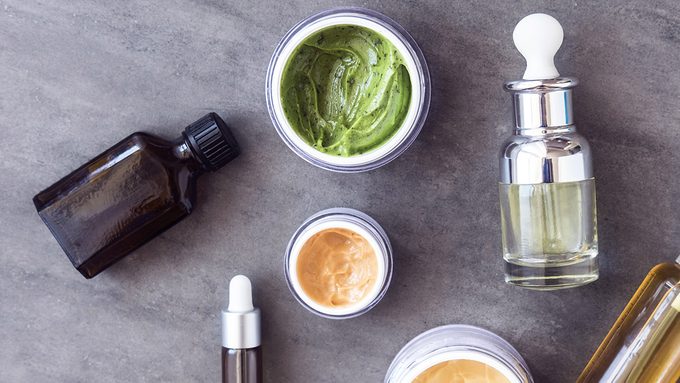The Ingredient That Will Forever Change Your Nightly Facial Routine
Looking for a rejuvenating boost or a way to soften those pesky wrinkles? This ingredient may just make you rethink your nightly facial cream altogether.

What’s the deal with retinol cream?
Prescription creams containing retinoic acid, a potent derivative of vitamin A, began life about 40 years ago as a topical treatment for patients with severe acne. Then dermatologists noticed that acne wasn’t the only thing retinol cream banished: Sun-induced age spots and wrinkles also faded. That’s when interest in a retinol cream really piqued.
That’s because, as studies show, retinoic acid (also called tretinoin) plumps wrinkles and kick-starts the release of collagen, which adds youthful volume to your face. Then it safeguards skin from collagenase, an enzyme triggered by sunlight that breaks down collagen.
How does retinol cream work?
In a few months of daily use of prescription cream (preferably at night, as vitamin A degrades in the light), skin starts looking less lined and more even-toned. All ages and skin types can benefit, although most women in Canada who do use it are in their 40s and 50s.
The drawbacks? When using a retinol cream, you may experience initial irritation, such as peeling, extreme dryness and redness.
“You have to be patient,” says Dr. Alastair Carruthers, a Vancouver dermatologist. “It can take from two to six months to see results.” And they’re a lifetime commitment; if you stop, age spots usually re-appear within weeks and wrinkles deepen again.
You can purchase retinol cream over-the-counter
Many cosmetic skincare lines offer anti-aging creams containing retinol, part of the vitamin A group of molecules. Retinol’s role in anti-aging creams is to soften skin and reduce the look of wrinkles. Retinol and retinoic acid are related – and both are referred to as retinoids – but retinol is far less irritating than the prescription acid.
Gentler still are the various types of esters, also derivatives of vitamin A: These are listed on beauty product labels as retinyl acetate, retinyl linoleate, retinyl palmitate and retinyl proprionate.
Because retinol degrades with exposure to light and air, you should choose one with packaging that blocks out both.
Some dermatologists have said for years that OTC formulas barely contain enough retinol to make a noticeable difference to the skin. But an independent in vivo study, published in 2007 in the Archives of Dermatology, changed that.
The study, the first to offer a benchmark, showed that retinol in a concentration of 0.4% applied three times a week for six months could significantly reverse cellular damage in mature skin.
A 2009 study sponsored by Johnson & Johnson (owners of RoC skin care) found that a low dose of 0.1% retinol promoted cell proliferation in both ex vivo and in vivo tests.
What you won’t find on retinol cream product packaging
But here’s the rub: Most companies don’t divulge retinol concentrations, let alone print them on the package. SkinCeuticals (available through skincare professionals) Retinol 1.0 Maximum Strength Refining Night Cream ($76, 30 mL) contains 1.0%, that’s printed right on the package.
One percent is also the highest amount of retinol allowed by Health Canada for over-the-counter products.
RoC, the maker of arguably the best-known non-prescription retinol products, declined to reveal their retinol concentrations for this article.
Vichy also doesn’t reveal retinol percentages, in part, it says, to avoid a “retinol race” among skincare companies.
Consumers would reach for the strongest formula, thinking it’s better, explains Caroline Debbasch, international scientific communications director for Vichy Laboratoires. That’s not necessarily the case, since even over-the-counter retinol can require building tolerance.
Still, wouldn’t it be nice if all brands printed percentages on their products, especially since retinol cream can be pricey? Then we could all make more informed choices about this proven anti-aging ingredient.
Next, check out the anti-aging treatments doctors use.




